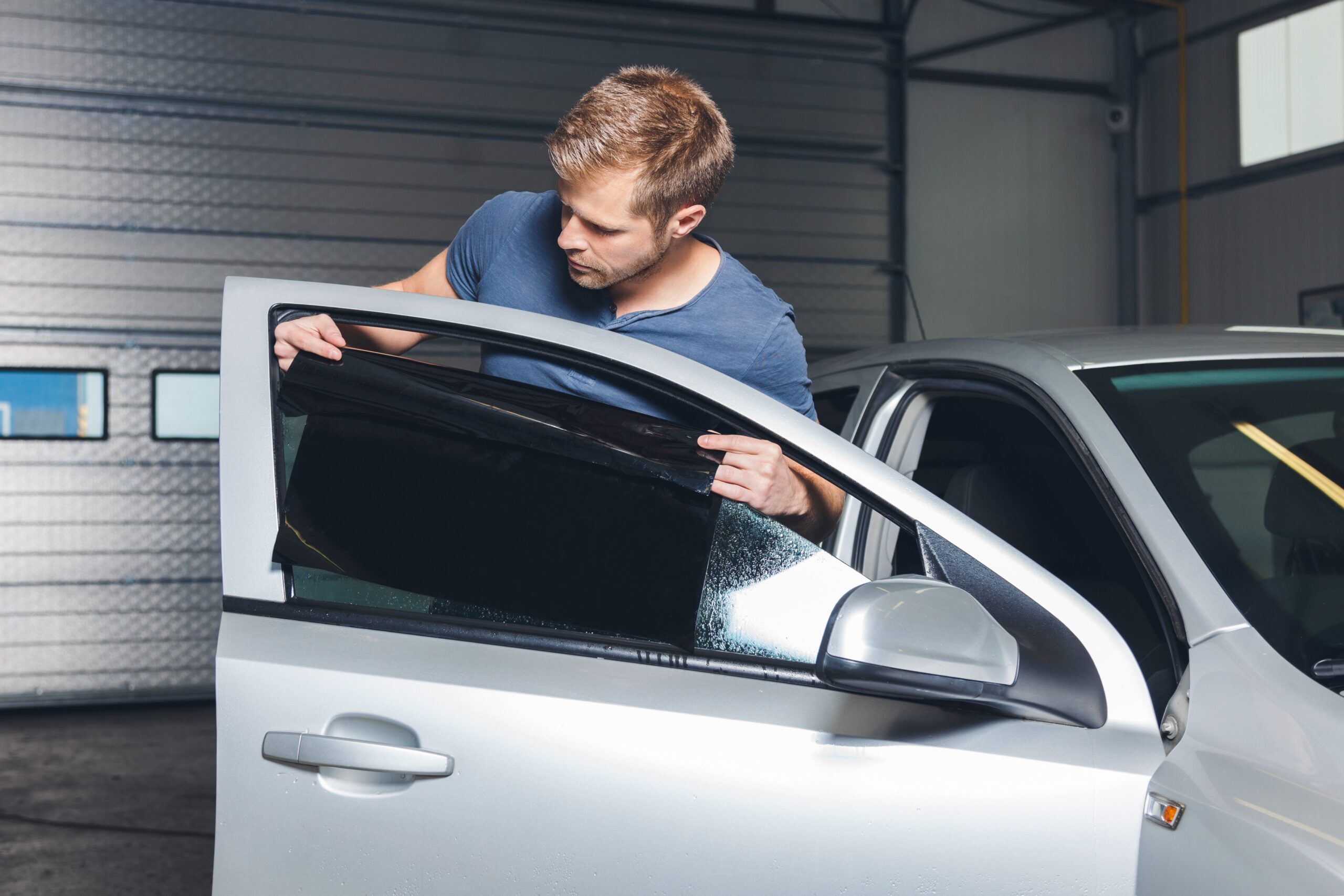If you’ve been required to get a safety inspection for your vehicle, you may be…
Window Tinting and Vehicle Safety: Balancing Darkness and Visibility Within the Law – Guest Post

Window tinting is a popular modification that can improve the look and feel of a vehicle, as well as provide some practical benefits, such as reducing heat and glare. However, it is important to remember that window tinting can also affect visibility, especially at night and in low-light conditions. So while enjoying the advantages of window tinting, we must never compromise our safety on the road.
In this article, we will discuss the purpose of window tinting, the laws governing it, and the importance of maintaining a balance between darkness and visibility.
Car Window Tinting Laws
Laws on having your vehicle windows tinted serve several purposes. Some purposes include maintaining public safety, regulating visibility from inside and outside the auto, and ensuring the enforcement of legal standards. These strike a balance between allowing car owners to enjoy the benefits of tinting while preserving necessary visibility for drivers and law enforcement officials.
Window tinting laws vary from state to state, but they generally have the same goal: to ensure that drivers have good visibility and that law enforcement officers can see inside vehicles. Window tinting can be dangerous if it is too dark, so it is important to choose a tint that is compliant with the law and to have it installed by a qualified professional.
Purpose of Window Tinting
Window tinting serves various important functions for vehicle owners. It primarily aims to reduce the amount of sunlight and heat that enters the vehicle, creating a more comfortable interior environment.
It also provides privacy by limiting the view from the outside. Many people also do it for style, to give their car a sleek and stylish look. Moreover, it offers protection against harmful UV rays, safeguarding both passengers and the vehicle’s interior from potential damage.
Understanding the multifaceted purposes of window tinting can help car owners make informed decisions about this popular modification.
Understanding Window Tinting Laws
Understanding window tinting laws is important for every vehicle owner. In this section, we’ll give you a thorough look at these regulations, highlighting the key points that directly affect car owners.
Measurement of Window Tint Darkness
One of the fundamental elements of window tinting laws is the measurement of tint darkness. This is typically assessed using a metric known as Visible Light Transmission (VLT) percentage. VLT indicates the amount of light that can penetrate through a tinted window. In simpler terms, it tells us how dark the tint appears and how much visibility it allows.
Variation of Laws
It’s important to recognize that window tinting laws are not universal. They can vary significantly not only from one state to another within a country, but also from country to country.
Understanding these variations is essential for readers to ensure compliance with their local regulations. This knowledge empowers car owners to make informed decisions about the level of window tint that is permissible in their specific location.
Balancing Darkness and Visibility
When choosing the right tint level, it is important to balance the darkness of the tint with the need for visibility. Maintaining the proper balance is essential for safe driving with window tinting. In this section, we’ll delve into the important factors that play a role in achieving this balance.
Types of Tint Materials
There are two main types of window tint materials: dyed and metallized.
Dyed tint: Dyed tint is the most common type of tint and is relatively inexpensive. It is made by adding dye to the window film. Dyed tint can be used to reduce heat, glare, and UV rays. However, it can fade over time and reduce visibility at night.
Metallized tint: Metallized tint is more expensive than dyed tint, but it is more durable and offers better heat and glare protection. It is made by adding a thin layer of metal to the window film. Metallized tint can also help to reduce radio interference.
Tint Percentage and Visibility
The tint percentage refers to the amount of visible light that can pass through the window tint. The lower the tint percentage, the darker the tint. For example, a 20% tint will allow 20% of visible light to pass through, while a 70% tint will allow 70% of visible light to pass through.
The tint percentage has a significant impact on visibility. The darker the tint, the less visible light can pass through, which can reduce visibility at night and in low-light conditions.
Location of Tint Application
The location of tint applications can also affect visibility. For example, tinting the windshield and front side windows more darkly can restrict visibility more than tinting the rear side windows and rear window more darkly.
It is important to choose a tint percentage that is safe and compliant with the law, regardless of the location of tint application.
Safety Concerns and Risks of Window Tinting
Reduces Nighttime Visibility: Excessive window tint darkness significantly hampers visibility, especially at night or in weather conditions like heavy rain. Imagine driving on a poorly lit road with heavily tinted windows; it becomes a serious challenge to spot other vehicles, read road signs, or anticipate potential hazards.
Issues with Improper Installation: Improperly installed or low-quality window tint can lead to problems such as bubbling, peeling, or distortion.
Legal Consequences: Engaging in illegal window tinting can result in significant consequences, including fines, penalties, or even having your vehicle impounded, depending on local regulations. This can be a costly and highly inconvenient outcome for drivers who choose to disregard tinting laws.
Challenges in Emergency Situations: In emergency situations, being able to clearly see inside a vehicle is crucial. This allows first responders to quickly assess the situation and take necessary action to ensure the safety of everyone involved. Excessive window tinting can slow this process, potentially leading to delays in providing assistance or making critical decisions.
Safety of Law Enforcement Officers: During routine traffic stops, law enforcement officers rely on their ability to see inside a vehicle for their own safety. Overly darkened windows can create doubt and could pose risks for both the officer and the driver.
Benefits of Legal Window Tinting
- Legal window tinting reduces heat and glare from the sun, enhancing driving comfort.
- Tinted windows offer increased privacy, making it harder for outsiders to see inside the vehicle.
- Provides protection against harmful UV rays, safeguarding both the vehicle’s interior and occupants.
- Improves the overall aesthetics of the vehicle, giving it a stylish and sophisticated appearance.
- Helps maintain a cooler interior temperature, potentially leading to fuel savings by reducing reliance on air conditioning.
- Enhances safety and security by holding shattered glass together in case of an accident and acting as a deterrent to break-ins.
- Prevents fading and damage to the vehicle’s interior upholstery caused by prolonged sun exposure.
- Reduces eye strain by minimizing glare from the sun, headlights, and other bright light sources.
- Can positively impact the resale value of the vehicle, offering additional features and benefits to potential buyers.
Maintaining and Removing Window Tint
Maintaining Window Tint:
To keep your window tint in good condition, regular cleaning is essential. Use mild, non-abrasive soaps or specialized tint-safe cleaners when cleaning tinted windows. Avoid harsh chemicals or abrasive materials, as they can damage the tint. When wiping down the tint, use a soft cloth or sponge to prevent scratches or peeling. Additionally, be cautious when rolling down tinted windows to prevent any damage to the edges.
Removing Window Tint:
If you ever need to remove window tint, there’s a process to follow. Start by warming the adhesive with a heat gun or a hairdryer; this helps to loosen the tint. Gently peel back the tint, starting from a corner, using steady, even pressure. Any remaining adhesive residue can be removed with a mixture of soapy water or adhesive remover. Finally, finish with a thorough cleaning to ensure the window is clear and undamaged after the tint has been removed.
Conclusion
Finding the right balance between window tint darkness and visibility is not just about personal preference, but a crucial aspect of vehicle safety. Following the legal guidelines ensures that you enjoy the benefits of window tinting without compromising the safety of everyone on the road.
Remember, getting your tint installed correctly and in line with local regulations is essential. By achieving this balance, you will not only enhance the look of your vehicle but also contribute to a safer driving experience for everyone.
Written By:
Steven Hopkinson, a distinguished figure in the automotive industry, co-owns Flying Window Tinting alongside his father, Sean. Renowned as Orlando’s premier auto window tinters, their 40 years of expertise reflect their commitment to excellence. With a passion for sharing knowledge, they empower car owners in achieving their desired tints, setting a benchmark of professionalism and skill.

